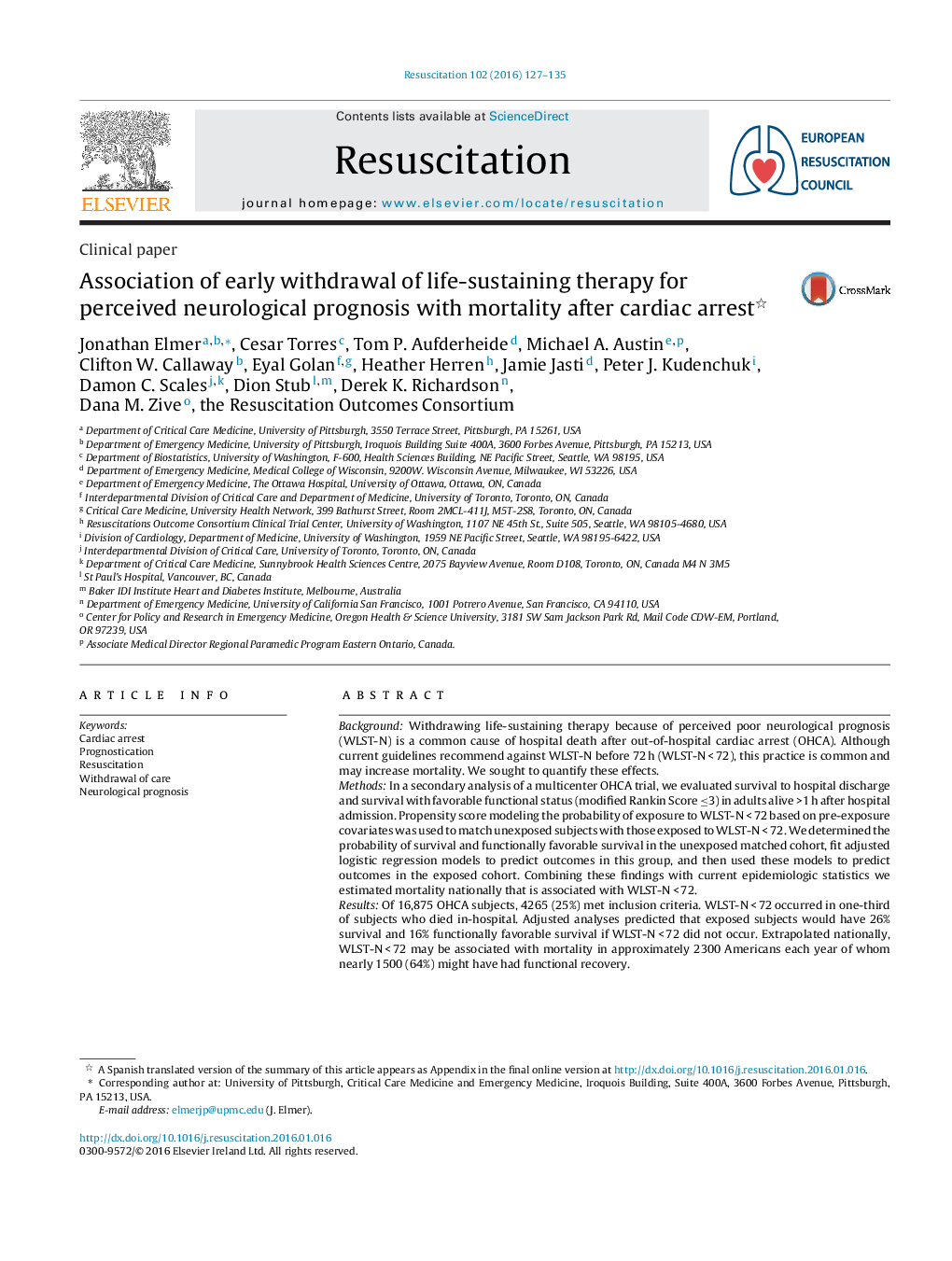| کد مقاله | کد نشریه | سال انتشار | مقاله انگلیسی | نسخه تمام متن |
|---|---|---|---|---|
| 3007783 | 1578982 | 2016 | 9 صفحه PDF | دانلود رایگان |
BackgroundWithdrawing life-sustaining therapy because of perceived poor neurological prognosis (WLST-N) is a common cause of hospital death after out-of-hospital cardiac arrest (OHCA). Although current guidelines recommend against WLST-N before 72 h (WLST-N < 72), this practice is common and may increase mortality. We sought to quantify these effects.MethodsIn a secondary analysis of a multicenter OHCA trial, we evaluated survival to hospital discharge and survival with favorable functional status (modified Rankin Score ≤3) in adults alive >1 h after hospital admission. Propensity score modeling the probability of exposure to WLST-N < 72 based on pre-exposure covariates was used to match unexposed subjects with those exposed to WLST-N < 72. We determined the probability of survival and functionally favorable survival in the unexposed matched cohort, fit adjusted logistic regression models to predict outcomes in this group, and then used these models to predict outcomes in the exposed cohort. Combining these findings with current epidemiologic statistics we estimated mortality nationally that is associated with WLST-N < 72.ResultsOf 16,875 OHCA subjects, 4265 (25%) met inclusion criteria. WLST-N < 72 occurred in one-third of subjects who died in-hospital. Adjusted analyses predicted that exposed subjects would have 26% survival and 16% functionally favorable survival if WLST-N < 72 did not occur. Extrapolated nationally, WLST-N < 72 may be associated with mortality in approximately 2300 Americans each year of whom nearly 1500 (64%) might have had functional recovery.ConclusionsAfter OHCA, death following WLST-N < 72 may be common and is potentially avoidable. Reducing WLST-N < 72 has national public health implications and may afford an opportunity to decrease mortality after OHCA.
Journal: Resuscitation - Volume 102, May 2016, Pages 127–135
